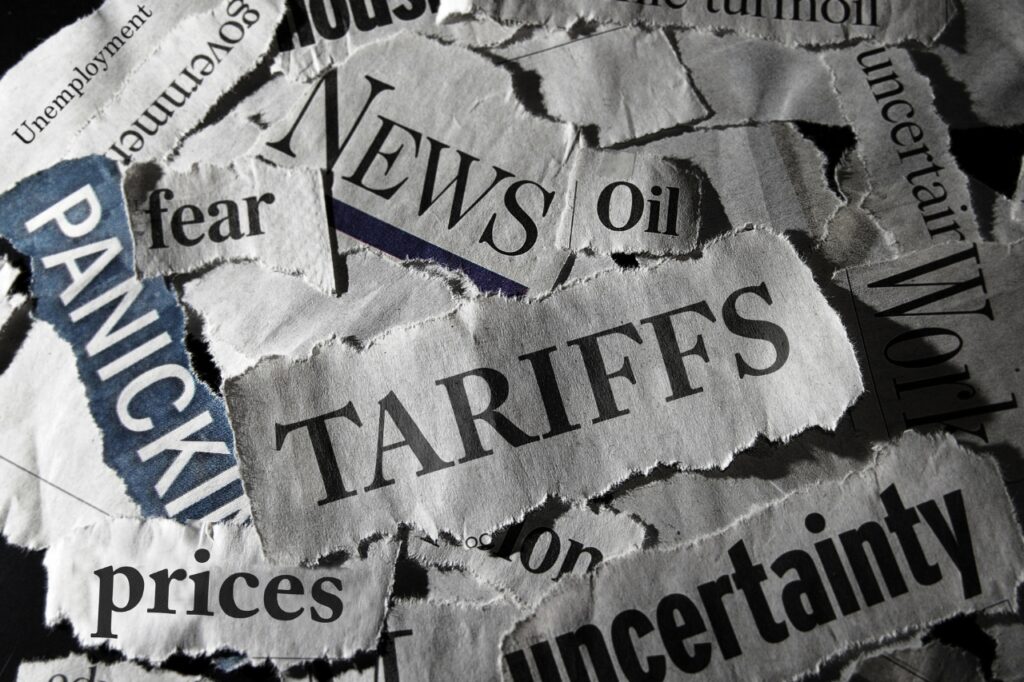
Statistics and Real-World Examples Showcase Need for Modern Inventory Strategies
AI-fueled inventory tracking or inventory management by spreadsheets — how do you plan to meet increasingly complex inventory challenges? Based on sales projections, many organizations have called to invest in the future; the shift away from manual methods to modern inventory strategies is gaining momentum across global enterprises.
Although figures vary depending on the research company, Global Market Insights (GMI) projects that the inventory management software market, which surpassed $3 billion in 2022, will hit a 5% Compound Annual Growth Rate (CAGR) between 2023 and 2032. GMI cites rapid e-commerce growth and supply chain issues, amplified by the pandemic and its aftermath, as the primary drivers behind the rise in demand for inventory optimization technology.
Rapid AI innovation has also caught the attention of manufacturers. As many as 79% of manufacturers recently told Deloitte they expect their AI investment to increase over the next year. Meanwhile, 76% say AI will only take three years to be integrated into all enterprise applications.
Results from early adopters show organizations have much to gain from implementing AI-enabled supply chain and inventory management. In contrast to more slow-moving competitors, McKinsey notes they leveraged their new tools to improve logistics costs by 15%, inventory levels by 35%, and service levels by 65%.
Supply Chain Waste Calls for a New Take on Inventory
At the same time, a global report released late last year concluded that adoption needs to happen faster. Although companies are acutely aware of the mounting inventory and supply chain challenges, they are “not investing the budget required to fix it.” The report — “The Missing Billions: The Real Cost of Supply Chain Waste” — analyzed supply chain data from 318 global firms and found that businesses are paying a high price for overproduction and waste. Among the key findings:
- 8% of stock perishes or is discarded
- 4.3% of stock spoils in the supply chain before it reaches the shelf
- Another 3.4% is discarded due to overproduction
- The losses amount to $163 billion worth of inventory or 3.6% of annual profits
The good news, McKinsey writes, “is that AI-based solutions are available and accessible to help companies achieve next-level performance in supply-chain management. Solution features include demand-forecasting models, end-to-end transparency, integrated business planning, dynamic planning optimization, and automation of the physical flow—all of which build on prediction models and correlation analysis to understand causes and effects in supply chains better.”
The Shortcomings of Traditional Inventory Management
Investing in a new approach to inventory inevitably means giving up or adding to your current solution. Traditional inventory management methods rely on basic forecasting techniques, historical sales data, and manual processes. While they may have served you well in the past, such methods come up short in the face of fast-moving and complex variables, resulting in excessive carrying costs, stockouts, and missed sales opportunities.
Common approaches include:
- Periodic Review System: Inventory levels are reviewed regularly, and orders are placed to replenish stock based on predetermined reorder points. However, this approach often leads to either excess inventory or stockouts.
- Fixed-Order Quantity System: Inventory is replenished in fixed quantities whenever the stock falls below a specified reorder point. While this method reduces the risk of stockouts, it doesn’t consider demand variability and could result in unnecessary carrying costs.
- Excel Spreadsheets: Many businesses still rely on manual inventory tracking using spreadsheets. However, this approach is prone to errors, needs more real-time updates, and can’t handle the complexities of modern supply chains. (For more insights on the shortcomings of Excel, watch this video: “Ready to Make Better Inventory Decisions: Ditch Excel!” and read this post, “The Arguments Against Using Excel for Supply Chain Management”)
What Can a New Inventory Management Strategy Look Like, and What Are the Gains?
To answer that question, let’s look at Hillman, a leading North American provider of complete hardware solutions and GAINS customer. With a revenue of $1.4 billion, 42,000 customers, and a diverse product portfolio of 112,000 SKUs, the company, like many others, depends on maintaining a sustainable supplier network to fulfill its ambitious customer service goals.
Amid wild fluctuations in material availability, Hillman asked GAINS to identify high-impact improvements across their global supplier network that would allow the company to become more agile. If the company could quickly sense supply constraints, it would be able to pivot to alternative suppliers based on location, availability, and price.
After deploying GAINS, Hillman achieved the following:
- 18% reduction in finished goods inventories
- Increased complete order fill rate from 96% to 98%
- Synchronized inventory policies and planning for a global team
- Slashed late shipments by 50%
- Improved global inventory turns by 20%
- Increased service to drive growth
A Hillman VP of Operations said, “With GAINS inventory optimization, we were able to reduce inventory and eliminate a warehouse while simultaneously increasing our inventory turns and customer service levels. GAINS enabled us to achieve service levels with significantly less inventory than our ERP tool did.”
Advanced Inventory Solution Brings Production Efficiency, Process Optimization, and More
In contrast to traditional inventory methods, Hillman and other adopters of modern inventory strategies leverage a range of advanced features to stay resilient and agile amid perennial supply chain volatility. GAINS, for instance, includes AI and machine learning alongside a range of automated, proprietary algorithms that consider a comprehensive set of cost and source variabilities.
In summation, your organization can benefit from features like these:
- Advanced Forecasting and Demand Planning: With advanced forecasting techniques, you can improve demand planning accuracy and optimize inventory levels based on more accurate predictions.
- Inventory Optimization Algorithms: Sophisticated algorithms determine optimal inventory levels for each SKU, considering factors such as demand patterns, lead times, and service level goals. This helps you minimize excess inventory and reduce carrying costs.
- Real-Time Visibility and Tracking: Real-time visibility into inventory levels, stock movements, and supply chain activities enables you to track inventory accurately, identify bottlenecks, and make proactive decisions.
- Collaboration and Integration: Seamless collaboration and integration among your supply chain stakeholders — manufacturers, suppliers, and distributors — dramatically improve your organization’s efficiency.
- Automation and Workflow Optimization: By automating manual inventory management processes, such as order processing, stock replenishment, and data entry, you reduce errors, save time, and boost overall operational efficiency.
- Analytics and Reporting: Strong analytics and reporting capabilities give you direct insight into inventory performance, demand trends, and key metrics, allowing you to make data-driven decisions and drive continuous improvement.
- Scalability and Agility: Scalability and agility are built in, allowing you to — just like Hillman — tackle fluctuating inventory volumes and adapt to changing business requirements with ease.
Ready to Transform Your Inventory Management?
The statistics and real-world examples highlight the pressing need for modern inventory solutions to address today’s challenges effectively. By embracing advanced inventory management tools, you can reap significant benefits and excel where traditional methods fall short.
Contact GAINS today to explore how our advanced inventory optimization solutions can help your business.
Read more:



